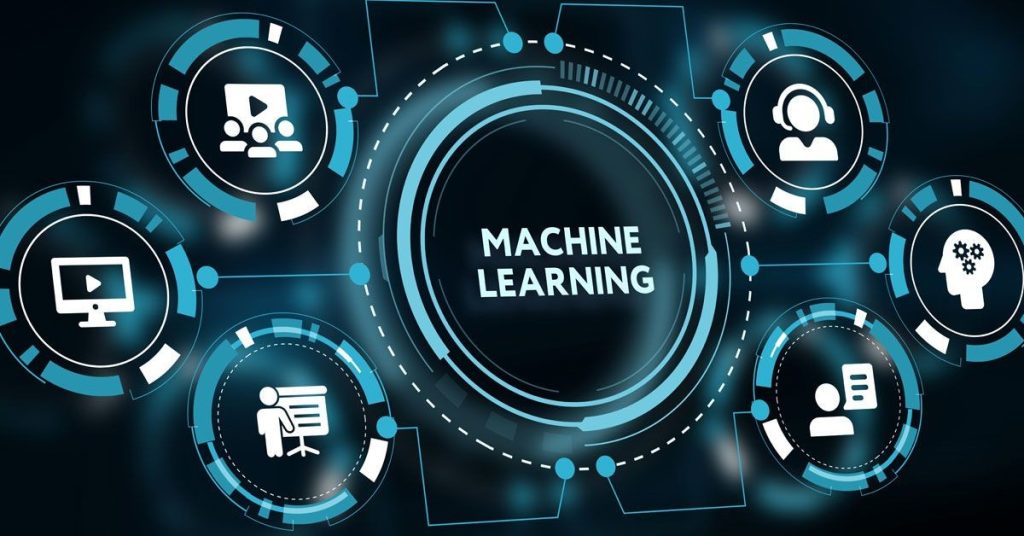Introduction: Overview of AI’s Subfields: Deep Learning and Machine Learning
Artificial Intelligence (AI) is a broad and rapidly evolving field, encompassing various subfields and technologies that allow machines to mimic human-like intelligence. Two of the most prominent subfields within AI are machine learning and deep learning. While these terms are often used interchangeably, they refer to distinct approaches and methods for solving problems and making decisions based on data.
Machine learning (ML) is the umbrella term for a range of techniques that allow computers to learn from data and improve over time without being explicitly programmed. Deep learning (DL), on the other hand, is a subset of machine learning that uses large neural networks and vast amounts of data to train models capable of performing complex tasks. While both ML and DL are integral to the progress of AI, they operate differently and are suited for different kinds of problems.
In this article, we will delve into the differences between deep learning and machine learning, explore their individual applications, and discuss when it’s best to use one over the other.
Machine Learning Basics: How Machine Learning Algorithms Learn from Data
Machine learning algorithms operate on the principle that machines can learn patterns from data without needing explicit instructions. Instead of being programmed with specific rules, a machine learning model is trained on data, allowing it to recognize patterns and make predictions or decisions based on new, unseen data.
There are several types of machine learning, including:
- Supervised Learning: In supervised learning, the model is trained on a labeled dataset, where the input data is paired with the correct output (also known as labels). The algorithm learns by comparing its predictions to the actual outputs and adjusting its parameters to minimize errors. This method is commonly used for classification (e.g., identifying whether an email is spam or not) and regression tasks (e.g., predicting housing prices).
- Unsupervised Learning: In unsupervised learning, the model is trained on unlabeled data and must find patterns or structures within the data on its own. Clustering (e.g., grouping customers based on purchasing behavior) and dimensionality reduction (e.g., reducing the complexity of data) are common examples of unsupervised learning tasks.
- Reinforcement Learning: This is a learning method in which an agent learns by interacting with its environment and receiving feedback in the form of rewards or penalties. Reinforcement learning is often used in robotics and game-playing AI.
Machine learning’s strength lies in its ability to handle structured data and its flexibility in solving a wide range of problems across industries, from healthcare to finance and beyond. However, ML algorithms are limited when it comes to handling complex, high-dimensional, and unstructured data, which leads us to the need for deeper approaches like deep learning.

Deep Learning Explained: Neural Networks and Their Ability to Process Vast Amounts of Data
Deep learning, a more advanced subset of machine learning, revolves around neural networks—algorithms inspired by the human brain’s structure and function. Neural networks consist of layers of interconnected nodes (neurons) that process information and make predictions. In deep learning, these networks can have many layers, which is why they are often referred to as “deep” neural networks.
Deep learning models excel at handling unstructured data, such as images, audio, and text. This is because they are capable of learning from large datasets and can automatically extract relevant features from raw input data. For instance, a deep learning model used for image recognition doesn’t require manually designed features like edges or textures; the model learns to recognize them on its own as it trains.
Some key components of deep learning include:
- Convolutional Neural Networks (CNNs): Commonly used in image and video processing, CNNs excel at extracting spatial hierarchies of features, making them ideal for tasks like image classification and object detection.
- Recurrent Neural Networks (RNNs): These networks are particularly suited for sequential data, such as time series or natural language processing (NLP). They retain information from previous steps in the sequence, making them powerful for tasks like speech recognition and language translation.
- Generative Adversarial Networks (GANs): GANs consist of two neural networks—a generator and a discriminator—that work against each other to generate new, synthetic data. GANs are widely used for generating realistic images, videos, and other types of media.
The strength of deep learning lies in its ability to process vast amounts of data, learn from raw, unstructured inputs, and perform complex tasks such as object detection, natural language understanding, and autonomous driving. However, deep learning requires substantial computational power and large labeled datasets to function optimally, which can be a barrier for some industries and applications.
Use Cases in Industry: Applications of Deep Learning vs. Machine Learning
Both machine learning and deep learning are transforming industries, but their applications vary based on the complexity of the problem at hand. Let’s take a look at some key use cases where each technology shines.
- Machine Learning Use Cases:
- Finance: Machine learning algorithms are widely used in the finance industry for credit scoring, fraud detection, and algorithmic trading. Supervised learning is particularly effective in predicting financial trends and making investment decisions based on historical data.
- Healthcare: ML models are used for predicting patient outcomes, diagnosing diseases from medical images, and personalizing treatment plans based on patient data.
- Retail: Machine learning is frequently employed for recommendation systems (e.g., suggesting products to customers) and demand forecasting in supply chains.
- Marketing: Predictive models powered by machine learning are used for customer segmentation, targeted advertising, and sentiment analysis.
- Deep Learning Use Cases:
- Image and Video Recognition: Deep learning models, particularly CNNs, are revolutionizing fields like autonomous vehicles, security surveillance, and medical imaging by enabling machines to interpret and understand images.
- Natural Language Processing (NLP): Deep learning has significantly improved speech recognition (e.g., Siri, Google Assistant), sentiment analysis, and machine translation (e.g., Google Translate).
- Healthcare: In addition to diagnostic imaging, deep learning models are used for more advanced tasks such as drug discovery, genomic analysis, and personalized medicine.
- Entertainment: Deep learning is the backbone of content generation technologies such as deepfakes, music composition, and AI-driven video game design.
In general, machine learning is often the go-to choice for tasks that involve structured data and less complexity, while deep learning is suited for unstructured, high-dimensional data such as images, audio, and text. However, the distinction between these two fields is not always clear-cut, and many applications require a blend of both approaches.
Which One Is Right for You? When to Use Machine Learning vs. Deep Learning
Choosing between machine learning and deep learning depends on several factors, including the complexity of the problem, the availability of data, and the computational resources at hand.
- Use Machine Learning When:
- You have structured data (e.g., spreadsheets, tables).
- The dataset is relatively small or moderate in size.
- You need a model that is easier to train and interpret.
- You have limited computational resources or need quicker deployment.
- You are solving problems like classification, regression, or clustering.
- Use Deep Learning When:
- You have large, unstructured datasets (e.g., images, text, video).
- You need to automatically extract features or patterns from raw data.
- You have access to substantial computational power (e.g., GPUs).
- You are working on tasks like image recognition, natural language processing, or reinforcement learning.
- The problem requires handling high-dimensional data or making decisions based on complex relationships.
In many cases, deep learning may not be necessary for simpler tasks that can be efficiently solved with machine learning. However, as data complexity increases, deep learning becomes a more viable option for achieving better performance, especially in domains like computer vision and NLP.
Conclusion: The Complementary Roles of Both Technologies in AI
Machine learning and deep learning are both crucial to the development of AI, each serving different roles based on the task at hand. While machine learning offers flexibility and efficiency for structured data and traditional use cases, deep learning provides powerful tools for solving more complex problems that involve unstructured data.
Rather than viewing these two technologies as competitors, it’s important to recognize their complementary roles. In many real-world AI applications, a hybrid approach that combines machine learning and deep learning models can deliver the best results. Understanding the strengths and limitations of each approach is key to unlocking their full potential and driving the future of AI.
As AI technology continues to evolve, so too will the ways in which machine learning and deep learning are applied across industries. The key is to identify the right tool for the right problem and ensure that both technologies are used ethically, responsibly, and with a clear understanding of their capabilities.


















































Discussion about this post